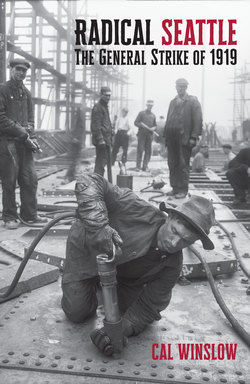Radical Seattle

Реклама. ООО «ЛитРес», ИНН: 7719571260.
Отрывок из книги
RADICAL SEATTLE
THE GENERAL STRIKE OF 1919
.....
The IWW opposed Chinese exclusion, and Seattle’s socialist movement included a strong current of anti-racism. Still, as late as 1917, the Seattle Daily Call reported striking butchers demanding a “white” cook. Alice Lord, talented organizer of the city’s women workers, above all its waitresses, was a committed exclusionist. Seattle’s most popular street speaker, however, the socialist firebrand Kate Sadler, was a scathing critic of Asian exclusion, above all when practiced by the unions. She was not alone. Anna Louise Strong, an advocate of child welfare, had been to Japan where she documented the plight of Japanese women workers. The Union Record insisted on the need “to break down racial barriers in the West.” When Harry Ault, editor of the Record, testified for the Seattle unions at a congressional hearing on Japanese immigration held in Tacoma, he opposed exclusion and the Japanese Land Act. The historian Katsutoshi Kurokawa wrote that Ault and Duncan had “little patience with racial prejudice.”4
Seattle’s workers rose in these years. It was a decade of intense, bitter conflict in the Pacific Northwest, by then widely known for strikes and radicalism. This ascent was far from steady. Seattle’s working class grew in fits and starts, building through fierce struggles, often interrupted.5 These conflicts, incessant in the timber camps and sawmills, bloody on the waterfront, outrageous in Everett, were commonplace in the movement and made Seattle a union town—a city where workers could imagine themselves running industry. Seattle’s working people, women and men, in unions or not, its families and communities, became class conscious in these years. This development cannot be understood as an isolated event. The General Strike of 1919 makes no sense if extracted from history, or from its environment; no sense if understood as simply an episode, limited to a week or perhaps a month. “Studying a single event,” the late historian Herbert Gutman argued, “cannot answer the basic questions, not even the general strike…. We need the background, of the discontent of working people in the Pacific Northwest as well as of the Seattle social and economic structure…. Only then [can we understand why] in that era a general strike occurred only in Seattle and indigenous radicalism hung on so tenaciously.”6
.....